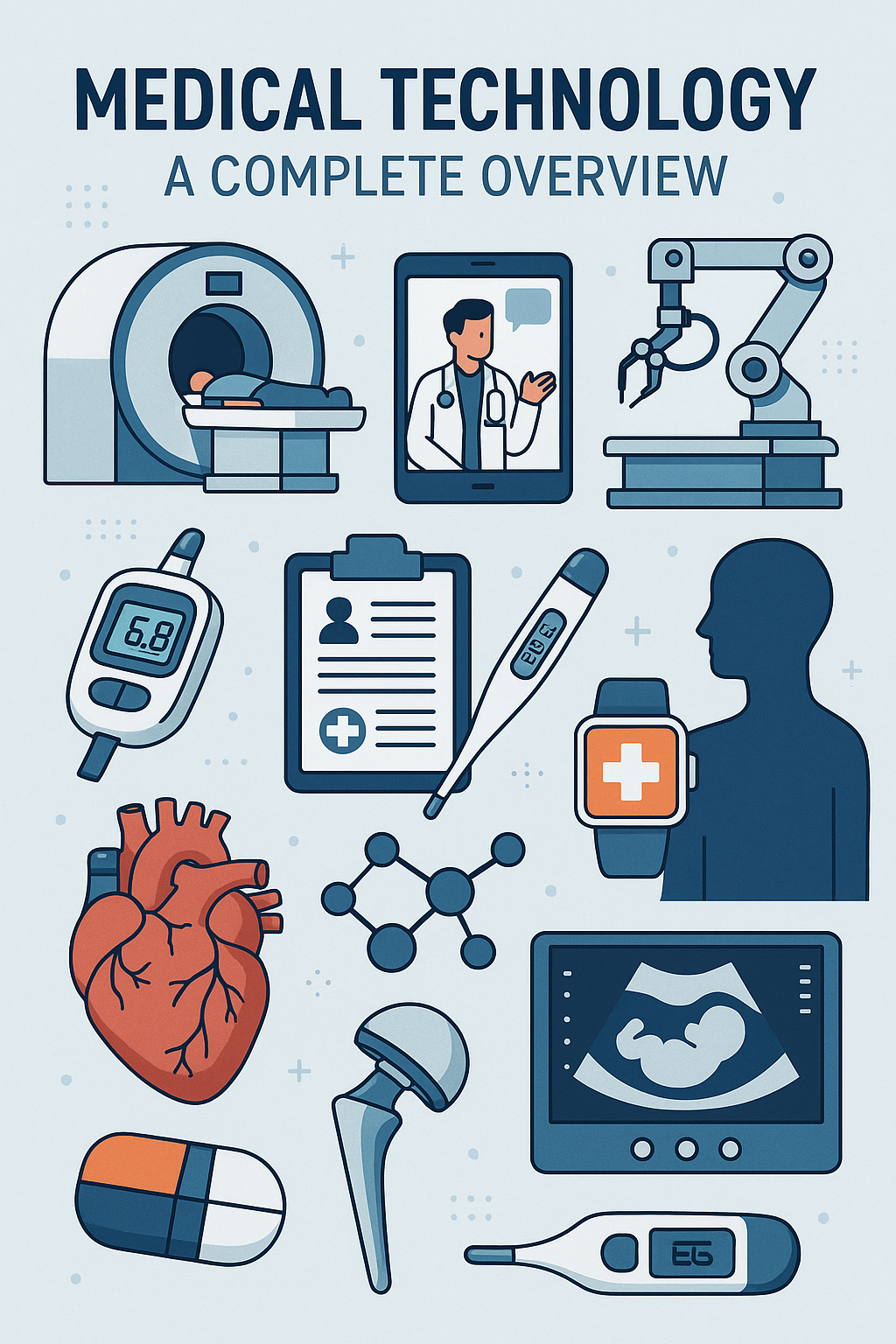In the modern world, where healthcare is evolving rapidly, medical technology acts as a backbone that strengthens medical services globally. It powers innovation, transforms patient experiences, and paves the way for healthier societies. But truly understanding what is medical technology requires a deep dive into its definitions, categories, significance, challenges, and future possibilities.
Understanding Medical Technology
Medical technology includes all the tools, equipment, systems, and techniques designed to diagnose, monitor, prevent, or treat health conditions. It bridges the gap between healthcare needs and scientific advancement, offering solutions that were once considered impossible.
Simply put, if a product or method helps to detect, cure, alleviate, or prevent health problems, it falls under the umbrella of medical technology. This field covers a wide range of innovations, from simple devices like thermometers to highly complex imaging machines and robotic surgical tools.
Main Branches of Medical Technology
Medical technology encompasses several vital areas, each playing a unique role:
1. Medical Devices
These include instruments and machines used for diagnosing, treating, or managing diseases:
- Diagnostic tools include MRI machines, ultrasound scanners, and CT imaging devices.
- Treatment devices include pacemakers, insulin pumps, and surgical lasers.
- Supportive aids such as prosthetics, wheelchairs, and mobility assistive systems.
2. In Vitro Diagnostics (IVDs)
This area focuses on tests performed outside the body using samples like blood or saliva:
- Blood sugar monitoring devices.
- Home pregnancy test kits.
- Laboratory-based disease detection assays.
IVDs are essential for early detection, personalized treatment, and better management of health conditions.
3. Digital Health Technologies
With technology increasingly entering the health space, digital tools are reshaping care delivery:
- Mobile applications that monitor fitness, mental health, or chronic diseases.
- Wearable tech like smartwatches tracks vital signs.
- Telemedicine services offer remote consultations.
- AI-driven platforms are aiding in faster and more accurate diagnoses.
4. Implantable Devices
Some technologies are designed to be placed inside the body to assist or replace biological functions:
- Artificial heart valves.
- Cochlear implants for hearing loss.
- Hip and knee replacement joints.
Each of these technologies offers a significant improvement in the quality of life for patients.
Why Medical Technology Matters
The role of medical technology in society is immense:
- Saving Lives: Innovations like automated external defibrillators (AEDs) and ventilators have saved millions worldwide.
- Improving Quality of Life: Devices such as prosthetic limbs and insulin delivery systems allow people to live more normal, active lives.
- Enhancing Early Detection: Early diagnosis through advanced imaging and testing tools means better treatment outcomes.
- Making Healthcare Efficient: Technologies like electronic health records (EHRs) and diagnostic machines speed up medical processes and reduce human error.
- Patient Empowerment: Apps and wearable devices allow individuals to monitor their health daily, encouraging healthier living.
Modern healthcare would look very different without medical technology, and far less effective.
Real-Life Examples of Medical Technology
The impact of medical technology can be seen everywhere:
- Robotic Surgery Systems like the Da Vinci robot enable exact operations with smaller incisions.
- Continuous Glucose Monitors help diabetic patients maintain stable blood sugar levels throughout the day.
- Portable Diagnostic Devices have revolutionized healthcare access, especially in remote or underserved areas.
- Smart Inhalers track asthma symptoms and medication use, offering patients better disease management.
These examples showcase how technology continues to push the boundaries of what is medically possible.
The Evolution of Medical Technology
The journey of medical technology spans centuries:
- Early medicine relied on basic tools like scalpels and rudimentary thermometers.
- The 19th and 20th centuries introduced stethoscopes, X-rays, vaccines, and antibiotics.
- Today, AI, 3D printing, genetic editing (CRISPR), and wearable technologies are leading the way.
Each phase of advancement brought with it leaps in life expectancy, disease control, and healthcare quality.
Regulation and Ethics in Medical Technology
Since medical technologies directly affect human lives, strict regulatory frameworks are essential:
- Approval processes ensure that devices are safe, effective, and beneficial.
- Post-market surveillance monitors long-term effects after widespread adoption.
- Ethical concerns such as data privacy, informed consent, and equitable access must be carefully addressed.
Governments, international bodies, and healthcare providers must work together to ensure that innovations benefit all, not just a privileged few.
Also Read: What is Web Development? A Guide to Building Websites
Challenges Facing Medical Technology
Despite its many benefits, the field faces notable hurdles:
- High Costs: Some technologies remain out of reach for poorer communities.
- Regulatory Hurdles: Strict approval procedures, while necessary, can slow the introduction of life-saving solutions.
- Data Security Risks: Protecting sensitive patient information is critical as healthcare goes digital.
- Technology Integration: New systems must seamlessly fit into existing healthcare infrastructures.
- Rapid Obsolescence: Technologies evolve quickly, sometimes making recent investments outdated within years.
Solving these challenges will be crucial for the future growth of medical technology.
The Future of Medical Technology
The coming years promise even more exciting developments:
- Artificial Intelligence will power more innovative diagnostics and treatments.
- Nanotechnology could deliver drugs directly to diseased cells.
- Regenerative Medicine will allow the growth of replacement tissues and organs.
- Augmented and Virtual Reality will revolutionize medical training and surgeries.
- Predictive Healthcare using genetic data and machine learning will prevent diseases before they even develop.
The goal is to move towards predictive, preventive, and personalized healthcare models rather than reactive ones.
Final Thoughts
So, what is medical technology? It is the fusion of science, technology, and healthcare working together to improve the human condition. Medical technology touches every part of our lives, whether through life-saving devices, early diagnostic systems, or digital health innovations.
As it continues to evolve, it holds the promise of not just treating illness but transforming how we approach health, bringing us closer to a world where healthcare is more effective, personalized, and accessible for everyone.
Medical technology is not just about machines or devices but about giving humanity the tools to live better, healthier, and longer lives.
